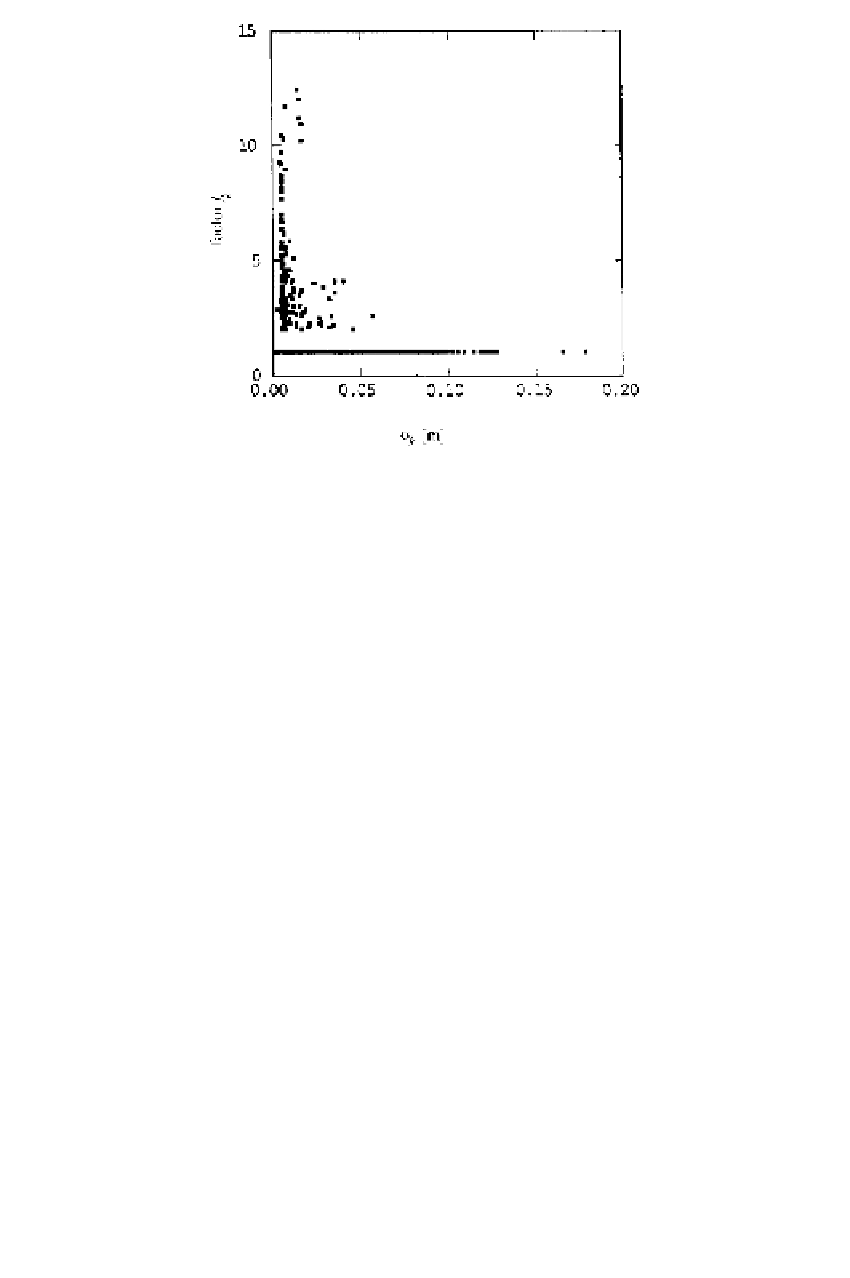Global Positioning System Reference
In-Depth Information
1
2
3
4
5
6
7
8
9
10
11
12
13
14
15
16
17
18
19
20
21
22
23
24
25
26
27
28
29
30
31
32
33
34
35
36
37
38
39
40
41
42
43
44
45
[31
Lin
—
0.1
——
Nor
PgE
Figure 8.10
Applied variance scale factor.
(Permisson ASCE.)
should be scaled only after the observations with the largest computed factors have
been analyzed and possibly been corrected. If proper justification can be found, the
factors can be applied. The factors
f
k
of Figure 8.10 were used in these solutions.
[31
Redundancy Numbers
The vector redundancy number
R
k
in (8.30) varies be-
tween 3 and zero. Values close to 3 indicate maximum contribution to the redundancy
and minimum contribution to the solution, i.e., the observation is literally redundant.
Such observations contribute little, if anything at all, to the adjustment because of the
presence of other, usually much more accurate, observations. A redundancy of zero
indicates an uncontrolled observation, which occurs, e.g., if a station is determined by
one observation only. A small redundancy number implies little contribution to the re-
dundancy but a big contribution to the solution. Such observations “overpower” other
observations and usually have small residuals. As a consequence of their “strength,”
blunders in these observations might not be discovered.
The ordered redundancy numbers in Figure 8.11 exhibit a distinctly sharp decrease
as the smallest values are reached. Inspection of the data indicates that these very
small redundancies occur whenever there is only one good vector observation left to
a particular station, while the other vectors to that station have been deweighted by
scaling the variance-covariance matrices as part of the automatic blunder detection
procedure. Typically, the scaled vectors have a high redundancy number, indicating
their diminished contribution. The only remaining unscaled observation contributes
the most; therefore, the respective residuals are very small, usually in the millimeter
range. Consequently, a danger of automated blunder detection and deweighting is that
parts of the network might become uncontrolled.












































